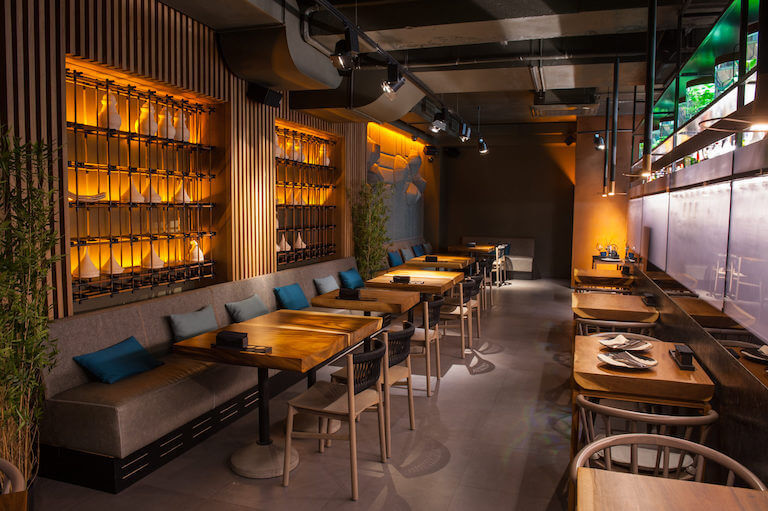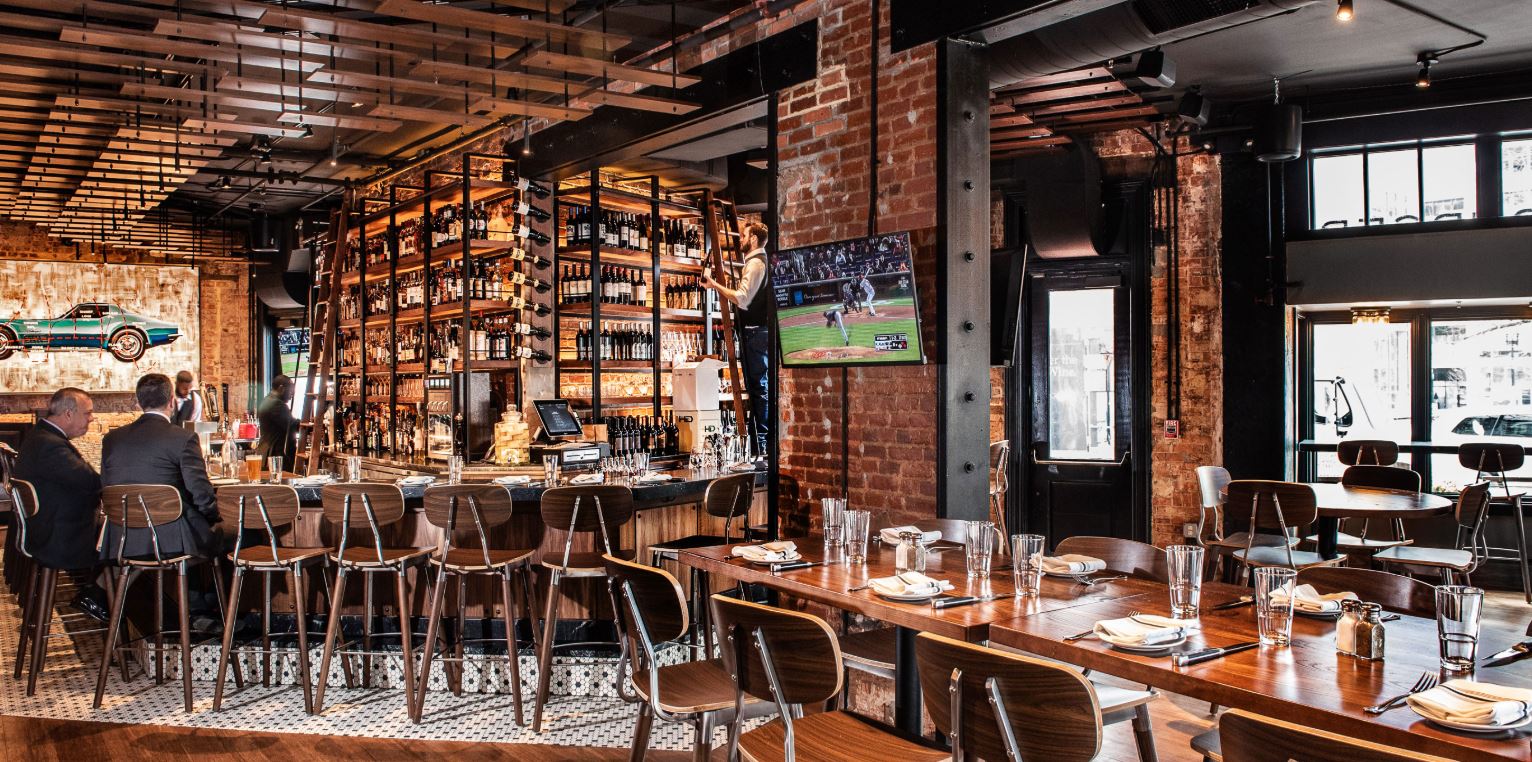Savor Authentic Asian Cuisine With a Pan-Asian Twist for a Culinary Adventure
Starting a cooking trip with authentic Oriental cuisine, improved with a Pan-Asian spin, supplies a distinct chance to check out the rich tapestry of flavors that specify the area's varied culinary practices. This experience welcomes you to savor the exquisite balance of tastes-- sweet, salted, spicy, and sour-- integrated by aromatic herbs and spices. Think of the ingenious combination of Thai curry and ramen or the unexpected joy of sushi burritos. As you ponder these luring meals, take into consideration the cultural narratives and historical impacts that shape them, each bite supplying a tale waiting to be uncovered.

Exploring Pan-Asian Flavors
In the realm of international gastronomy, Pan-Asian cuisine stands out for its exceptional variety and the harmonious interaction of tastes from different Eastern cultures. This cooking method commemorates the rich practices and special active ingredients found throughout the continent, creating a tapestry of tastes that is both fascinating and enjoyable. Key to Pan-Asian cuisine is its capacity to balance different flavors-- sweet, salted, spicy, and sour-- while highlighting the quality and high quality of each ingredient.
From the umami-rich soy sauce of Japan to the fiery chili peppers of Thailand, Pan-Asian food provides an extensive combination of tastes. These components are commonly incorporated in inventive methods, improving recipes with layers of complexity. For circumstances, the usage of fragrant herbs such as lemongrass and cilantro, typical in Vietnamese and Thai cuisine, adds a revitalizing brightness to recipes, while the unification of coconut milk delivers a velvety, rich structure.
The emphasis on fresh produce and fragrant spices makes sure that each dish is not only a feast for the taste yet additionally for the detects. Pan-Asian food invites restaurants to start a cooking trip, exploring the large and varied landscapes of Eastern gastronomy with every bite.
Blend Recipes to Try
While Pan-Asian food is celebrated for its traditional flavors, the modern-day culinary landscape is progressively embracing blend meals that mix these traditional aspects with influences from other regions. This ingenious technique not only honors the abundant heritage of Asian cookeries however additionally introduces unique preference experiences that interest contemporary tastes buds.
A prime instance of such a fusion meal is the Korean-Mexican taco, where marinated bulgogi beef is wrapped in a cozy tortilla, covered with kimchi and a spicy gochujang-infused salsa. This combination marries the vibrant, full-flavored tastes of Korea with the vibrant, fresh components of Mexican cuisine. In a similar way, sushi burritos have obtained popularity, integrating the fragile creativity of Japanese sushi with the passionate, hand-held ease of a burrito, frequently featuring blend ingredients like tempura shrimp and avocado with a drizzle of wasabi mayo.
One more significant recipe is Thai curry ramen, which infuses the velvety, fragrant seasonings of Thai curry into the reassuring brew of typical Japanese ramen, creating a harmonious blend that entices the detects. These blend recipes extend past mere novelty; they represent a culinary dialogue in between cultures, encouraging exploration and technology worldwide of Pan-Asian cuisine.
Necessary Active Ingredients and Spices
To genuinely value Pan-Asian food, one must understand the essential components and seasonings that develop its structure. This varied cooking design attracts from an abundant tapestry of Eastern practices, using an unified mix of flavors and textures. Trick ingredients include soy sauce, fish sauce, and oyster sauce, which pass on a mouthwatering umami deepness necessary to Asian recipes. Corresponding to these are rice vinegar and mirin, offering a fragile level of acidity and sweetness.
Fragrant aspects are critical, with garlic, lemongrass, and my response ginger being ubiquitous throughout different Pan-Asian recipes. These active ingredients supply a great smelling base that enhances the intricacy of flavors. Seasonings such as star anise, cardamom, and cinnamon introduce heat and personality, resembling impacts from regions like China and India.

Food Preparation Methods and Tips
Mastering the art of Pan-Asian food calls for knowledge with its unique cooking methods, each adding to the vibrant tapestry of tastes this cooking practice is celebrated for. Central to these approaches is the stir-fry, a rapid cooking technique that protects the nutritional honesty and vivid colors of active ingredients. Using a wok, the stir-fry approach permits even heat distribution, crucial for accomplishing the particular structure and taste equilibrium of Pan-Asian dishes.
An additional fundamental technique is steaming, particularly prevalent in Chinese food. This mild technique maintains the all-natural flavors and nutrients of active ingredients, making it ideal for seafood and veggies. Dumplings, a cherished staple, often take advantage of steaming, leading to soft, succulent textures.
Cooking, likewise integral, presents smoky midsts to meals such as Korean bulgogi or Japanese yakitori (best asian restaurant Islamabad). This strategy frequently involves seasoning components, allowing tastes to penetrate deeply prior to food preparation over an open fire or warm plate
Lastly, understanding the art of stabilizing flavors-- sweet, sour, salty, bitter, and umami-- is essential. Properly layering these components can raise a meal from ordinary to amazing, using a facility and pleasing cooking experience that embodies the significance of Pan-Asian cuisine.
Dining Experiences Worldwide
Around the world, Pan-Asian food uses an unparalleled dining experience, commemorated for its rich tapestry of tastes and dynamic discussions. This culinary sensation has gone beyond cultural limits, recording the hearts and tastes buds of food fanatics worldwide. In multicultural cities fresh York, London, and Sydney, Pan-Asian dining establishments work as melting pots where culinary practices from Thailand, Japan, China, and beyond assemble, providing diners with a diverse mix of dishes that highlight the region's variety.
The worldwide charm of Pan-Asian food hinges on its ability to provide both authenticity and technology. Cooks skillfully marry traditional ingredients such as lemongrass, soy sauce, and miso with contemporary techniques, leading to meals that are both refreshingly brand-new and acquainted. This fusion allows restaurants to begin on a culinary journey that values heritage while embracing modernity.
In addition, eating experiences are boosted with thoughtfully made atmospheres that show the values of Pan-Asian appearances. From minimalist Japanese-inspired interiors to lively Thai-themed rooms, each restaurant provides an one-of-a-kind atmosphere that complements the culinary offerings. Therefore, patrons are not merely taking in a dish yet partaking in a cultural experience, making Pan-Asian dining a genuinely international sensation.
Final Thought
The exploration of Pan-Asian cuisine provides an extensive understanding of the elaborate interaction of tastes and cooking traditions across Asia. By embracing combination dishes such as Thai curry ramen and sushi burritos, the cooking journey not just highlights the versatility of typical components yet likewise showcases innovative modern-day strategies. This gastronomic adventure, improved by cooking methods and vital spices, supplies a special opportunity to appreciate the social diversity and cooking virtuosity that define Pan-Asian food on a global range.
Embarking on a culinary journey via authentic Eastern cuisine, improved with a Pan-Asian twist, uses an one-of-a-kind chance to discover the rich tapestry of tastes that define the area's varied culinary practices.In the world of international gastronomy, Pan-Asian food stands out for its impressive diversity and the unified interaction of tastes from numerous Eastern cultures. Trick to Pan-Asian cuisine is its capability to stabilize contrasting flavors-- sweet, salty, spicy, go now and sour-- while highlighting the freshness and high quality of each component.
